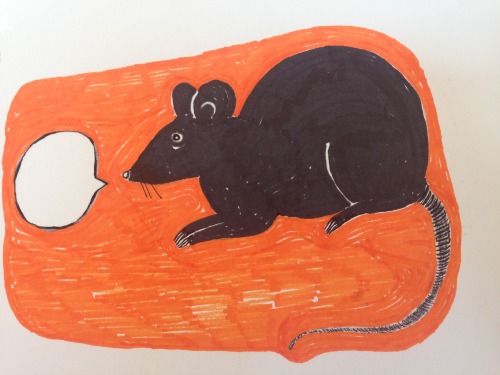
Who can forget their first biology class in dissection? Numb as I was to the suffering of animals, I peeled off the rat’s skin with barely a thought. Some of us even got the idea there was something funny about messing around with the dead bodies, naming our rats and/or making them dance.
Isn’t there an ad on TV where some old man entertains the grandkids by turning chickens from the freezer into marionettes?
Hilarious.
Ha, ha, ha, ha, ha, ha, ha, ha, ha, ha, ha, ha, ha, ha, ha, ha, ha, ha, ha, ha, ha, ha, ha, ha, ha, ha, ha, ha, ha, ha, ha, ha, ha, ha, ha, ha, ha, ha, ha, ha, ha, ha, ha, ha, ha, ha, ha, ha, ha, ha, ha, ha, ha, ha, ha, ha, ha, ha, ha, ha, ha, ha, ha, ha, ha, ha, ha, ha, ha, ha, ha, ha, ha, ha, ha, ha, ha, ha, ha, ha, ha, ha, ha, ha, ha, ha, ha, ha, ha, ha, ha, ha, ha, ha, ha, ha, ha, ha, ha, ha, ha, ha, ha, ha, ha, ha, ha, ha, ha, ha, ha, ha, ha, ha, ha, ha, ha, ha, ha, ha, ha, ha, ha, ha, ha, ha, ha, ha, ha, ha, ha, ha, ha, ha, ha. ha…
Now you, too, (if you live in England) can play with dead animals and even make art with them.
As reported in the New York Times on Monday, classes, which are described as a combination arts and crafts and taxidermy are now offered across the pond. A four-hour lesson allows participants bring little dead mice “back to life,” by skinning them, stuffing the skins and dressing them up like dolls.
Oh yes, it’s controversial notes Times writer Kimiko De Freytas-Tamura: “For some people, the course is eccentric or downright macabre. To others, it is an opportunity to pursue a very British hobby.”
Oh those crazy Brits! (Hey, I’m not saying there aren’t a lot of Americans who wouldn’t dig something like this – a lot of Americans.)
According to the article, stuffing dead animals and dressing them up in tiny clothes was an idea of fun dating back to 19th century England — concocted by this guy, Walter Potter, the “pioneer of anthropomorphic taxidermy.” He ended up with a whole museum of dioramas: rabbits in little outfits going to school, mice in ruffles having tea parties, etc.
At the bottom of it all, of course, is the idea that animals are ours to use any way we want – either for food, entertainment, research or for art projects. It’s the old “Man is the Master of the Universe” crap and everybody else is born to serve.
One of the English “arts and crafts” students described what she was doing as a kind of a gift to the killed mice. “(It) gives them a second opportunity to be enjoyed and to be present in your life.”
Arts and crafts taxidermy teacher Margot Magpie also offers an “advanced class,” in making hats out of bird wings. And the taxidermist crafter sells hair clips and headbands festooned with preserved mice bodies. Yeah, I know, very punk or if you like, very Goth. Ghouls rock!
The dead animal art thing has been hot for quite a while now, with the used-to- be Young British Artist Damien Hirst who’s probably the most famous and definitely the most rich, selling his formaldehyde-embalmed sharks, cows and sheep for as much as $12 million each. I haven’t seen any of Hirst’s corpses.
Then you also hear about art students pulling such stunts as killing chickens in front of audiences. Maybe that’s where artist Laura Ginn got her idea of a multi-course rat dinner which she served in a white-walled New York City art gallery. Messing around with dead animals is a way to get attention. She managed to get a large article in the New York Times about the event.
Seems to me there’s a way to do art with dead animals and a way perhaps not to do it. For me, a way to do it would be the amazing guerrilla theater performance held in many cities for National Animal Rights Day which included silent black-T-shirted protesters tenderly and sometimes tearfully holding the dead bodies of chickens, birds, rats, mice, piglets, squirrels, to order to raise awareness.
Another way to do it would be Joseph Beuys’ stunning performance piece in the ‘70s, “How to Explain Pictures to a Dead Hare,” where he walked around a gallery cradling a dead hare. As he went from picture to picture he would whisper to the animal. Yes, the work is thought to be about the impossibility of explaining anything especially art, but I think it’s also about our bond to animals.
“Even a dead animal preserves more powers of intuition than some human beings with their stubborn rationalism,” said Beuys.
There’s art (and craft) that has the potential to deaden us and art that has the potential wake us up. “To be or not to be that is the question.”
— A Vicious Vegan blog post —

Strong piece Leslie! (Don’t even get me started about artists who use other animals in their artwork, artists’s responsibility, ethical engagement and artmaking in the 21st century.) Keep the inspired, thoughtful posts coming.
This is brilliant, Leslie. I don’t want anything to do with “artists” who use dead animals in their “artwork”. In th e late 90s I was rejected from a show at the SF Art Commission Gallery of animal art. In those days I made it a point to view shows where my work was rejected, and I ended up being really glad my work wasn’t included because the curator included an installation of dead mice with angel wings. Repulsive. BTW, I held an animal at National Animal Rights Day in SF 2 weeks ago.